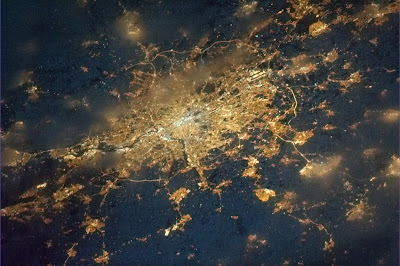BOOKS it seems have been more popular than ever during 2020 as many people re-discovered reading during the lockdown and restrictions of the Covid-19 pandemic of the year. And so here is my own top ten of the year just past.
I haven’t rated them in any order, other than alphabetically by author surname, as that would seem a bit unfair because they are quite a disparate collection and I have enjoyed them all equally but for different reasons.
It is, however, appropriate that Sir David Attenborough’s A Life on Our Planet heads the list as this is probably the most important statement about our future if we are to do anything to avoid a catastrophic future.
I’d also like to point out that, part from those I received direct from publishers for review purposes as part of my work, the others were purchased from local independent bookstores.
For each of the books listed below I’ve given a brief summary taken from a longer review and, if there is one, a link to the online review.
A Life on Our Planet - David Attenborough
The fascinating life- journey of Sir David Attenborough unfolds chapter by chapter in ‘A Life on Our Planet'. It's an accessible, timely nicely written book, full of the wisdom and optimism for both now and the future against the backdrop of his own life adventures.
Dark Skies -Tiffany Francis
Francis explores nocturnal landscapes and investigates how our experiences of the night-time world have permeated our history, folklore, science, geography, art and literature. I love the fact too that she brings to life many familiar and beautiful parts of the UK, not least when she writes about Buster Hill in Hampshire, still one of my favourite walking locations.
The Mission of a Lifetime - Basil Hero
A thought-provoking book chronicling the lives and lessons of the 12 Apollo astronauts whom Hero calls ‘The Eagles’. In sharing their wisdom he urges us to reframe our view of Earth: no identifiable nations, borders or races. Each chapter begins with key life lessons that readers can gain from the moon walkers, from overcoming fear to finding gratitude and practising humility in all that you do.“What all Eagles agree on is that, when viewed from the deadness of the Moon, life on Earth is a miracle, a living paradise that much of humanity has failed to respect and care for.”
The Wall - John Lancaster
A middle England dystopia for our fractured and uncertain times, and the only novel in my top ten. A thrillingly apposite allegory of broken Britain that asks key questions about the choice between personal freedom and national interest. A hypnotic work about a broken world you might recognise and about what might be found when all is lost.
Incandescent - Anne Levin
The thrust of Levin’s book is that natural light (and dark) is fundamental to almost every aspect of life on Earth, interacting with humans and animals in profound yet subtle ways. “We mess with the eternal rhythm of dawn-day-dusk-night at our peril,” she writes. “But mess with it we have, and we still don't truly understand the consequences.” Click here for my longer review.
Our Final Warning - Mark Lynas
Along with Attenborough and Wallis-Wells, this was my third book of the year looking at different aspects of climate change and how we might deal with it if not already too late. In essence, it is a digest version of enormous amounts of climate science papers published in the world’s best journals over recent years. Lynas tries to be hopeful at the end, arguing that everyone should now be fighting against climate change, much like we have done for Covid-19.
Limitless - Tim Peake
As a journalist writing about space, I've been fortunate enough to have followed closely his rise into the world of astronauts and space stations, so I was unsure what I might make of this latest astronaut tome. But I need not have worried. A captivating read and eloquently told. It also turned out that for six months or so in the late 1990s I actually worked alongside Tim Peake’s Dad, Nigel, who was Features Editor at the Portsmouth Evening News. Such a small world, isn't it?
The Fens - Francis Pryor
A fascinating account of a complex landscape by archaeologist Francis Pryor who has dug and worked its soil for almost 40 years. Weaving together strands of archaeology, history and personal experience, he paints an intimate portrait of the East of England's marshy and mysterious Fenland. Particularly interesting for someone who grew up in The Fens and now lives along the western edge close to Roman King Street.
The Uninhabitable Earth - David Wallis-Wells
A grim book which expands on a viral article of the same name, published in New York in the summer of 2017 and which frightened the life out of everyone who read it. It’s essentially about the harsh realities and impacts of climate change and, as Wallace-Wells points out, the bigger problem is the vast number of people (and governments) who acknowledge the true scale of the problem but continue to act as if it’s not happening.
The Salt Path - Raynor Winn
An honest and life-affirming true story of coming to terms with grief and the healing power of the natural world. Ultimately, it is a portrayal of home, and how it can be lost, rebuilt and rediscovered in the most unexpected ways. I enjoyed every page of this remarkable and very human journey around the coast of Cornwall.
Happy reading!
PS - by late 2023, the Lighthouse Keeper plans to have completed and published his own first novel - for a sneak preview see the webpage Flood Waters Down





























